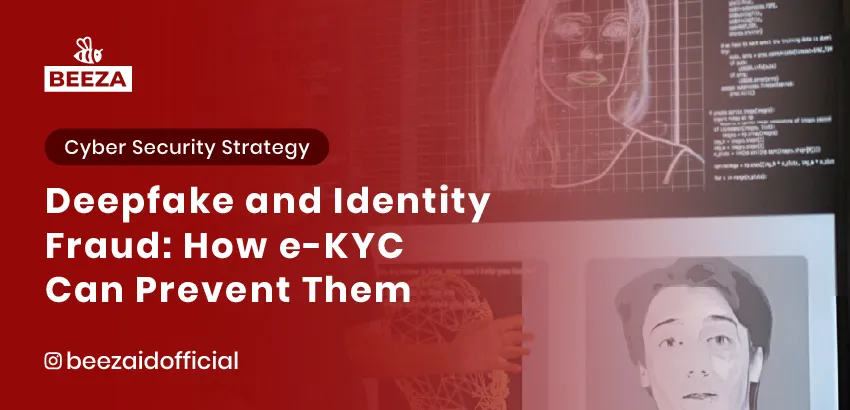
Introduction: Deepfake and Identity Fraud
In the increasingly sophisticated digital era, identity security challenges are becoming more complex. Deepfake technology allows for the creation of highly convincing fake videos, images, and voices. Cybercriminals can use this to create fake identities and deceive verification systems. One of the main solutions to this problem is electronic Know Your Customer (eKYC). With continuously evolving technology, eKYC can detect and prevent identity fraud effectively. This article explores how deepfake technology poses a threat, its impact, and how eKYC serves as the primary defense against it.
What is Deepfake and Identity Fraud?
Deepfake is an AI-based technology that enables realistic manipulation of visuals and audio. This technology can replace a person’s face in a video, mimic voices, or even create entirely new identities. Fraudulent identities generated by deepfake can be used for various criminal activities, such as:
- Financial Fraud: Criminals can use fake identities to open bank accounts or apply for illegal loans.
- Document Forgery: Deepfake-generated identities can be used to create fake passports, driver’s licenses, or identification cards.
- Cyber Attacks: Fraudulent identities can be used to bypass security systems and gain unauthorized access to digital services.
Challenges in Detecting Deepfake
Deepfake technology is becoming increasingly advanced, making it difficult to distinguish from real footage. Some of the major challenges in detecting deepfake include:
- High Realism – AI can now generate highly natural facial expressions and movements.
- Voice Forgery – Deepfake technology can accurately mimic a person’s voice, making detection even more challenging.
- Use in Digital Verification – Many services rely on video-based verification, which deepfake can exploit.
How eKYC Can Prevent Deepfake Fraud
eKYC is a digital identity verification system that relies on advanced technology to ensure the authenticity of user data. Here are some ways eKYC can combat deepfake threats:
1. Deepfake Detection with AI
Modern eKYC systems use artificial intelligence to analyze signs of forgery in videos and images. AI can detect inconsistencies in lighting, skin texture, or unnatural facial movements.
2. Liveness Detection
Liveness detection technology ensures that the person undergoing verification is a real individual and not a recorded deepfake. Some methods used include:
- Blink Detection: Deepfake technology often struggles to mimic natural blinking.
- Real-Time Movement Response: The system may ask users to perform specific actions, such as turning their heads or smiling.
- Light and Shadow Analysis: AI examines how facial features interact with surrounding light to confirm authenticity.
3. Multi-Factor Biometric Verification
eKYC increasingly relies on biometric verification methods such as fingerprint scanning, facial recognition, and iris scanning to enhance identity verification accuracy.
4. Blockchain for Data Security
The use of blockchain in eKYC helps maintain the integrity of user data and prevents manipulation. With blockchain, stored identity data cannot be altered or tampered with undetected.
5. Monitoring and Analyzing Transactions
Beyond identity verification, eKYC can also monitor user activity to detect suspicious patterns linked to identity fraud.
Real-World Case: Deepfake Fraud and eKYC Solutions
In several countries, deepfake-based identity fraud cases have been on the rise. For example, a European financial institution reported an attempt to use deepfake-generated identities for online loan applications. Thanks to an eKYC system equipped with AI and liveness detection, the fraud attempt was thwarted before any financial loss occurred.
Conclusion
Deepfake and identity fraud are serious threats in today’s digital world. However, with the implementation of advanced eKYC technology, organizations can effectively detect and prevent identity misuse. The combination of AI, biometrics, liveness detection, and blockchain makes eKYC the primary solution in protecting verification systems from deepfake attacks.